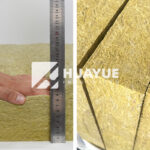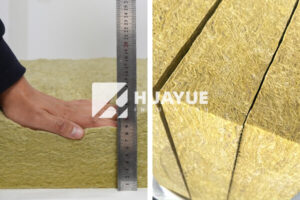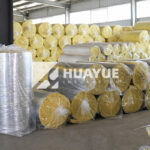Loose Mineral Wool Insulation: Is It the Right Choice for Your Industrial Needs?
Loose mineral wool insulation has become common in many industries for its fire resistance and energy-saving potential, but many still wonder about its possible challenges and real-world performance.
Loose mineral wool insulation is made from rock or slag and offers strong fire resistance, sound absorption, and thermal insulation. However, it can settle over time if not installed correctly, and handling requires safety gear to avoid irritation.

Not all insulation solutions are alike. Many of us in industrial plant maintenance or design have learned this through project after project. Choosing loose mineral wool insulation brings both opportunities and real concerns. If you’re making choices for efficiency, safety, or long-term reliability—keep reading. I’ll walk through the drawbacks, differences in material, best use practices, and even answer the question about unwanted pests.
What are the downsides of mineral wool?
Many facility managers think mineral wool solves every insulation problem, only to discover hidden issues later. Some drawbacks can affect performance, worker safety, and long-term maintenance budgets.
The main downsides of mineral wool are potential irritation to skin, eyes, and lungs during installation, risk of settling or movement if not adequately contained, and dust release during handling or after disturbance. It also does not resist water absorption as well as some closed-cell alternatives.

If you’ve ever handled loose mineral wool during a late-night shutdown, you know it’s unfriendly to exposed skin. Personal protection is non-negotiable. Even more important is the risk of material shifting or settling, especially in vertical cavities or high-vibration settings. These changes can break the insulation’s thermal barrier, allowing cold bridges and increasing energy costs. Fine fibers can also become airborne. This means you may need extra ventilation or cleanup, especially during retrofits. When moisture is a concern, mineral wool’s tendency to absorb water can lead to clumping, loss of insulation value, and even corrosion on underlying metal. Here’s a clear breakdown:
| Disadvantage | Why It Matters | Solutions |
|---|---|---|
| Skin/Irritant risk | Causes discomfort, especially in eyes | Always use PPE |
| Settling/shifting | Thermal breaks, uneven coverage | Proper containment, dense packing |
| Dust release | Worker safety, cleanliness | Wetting agents, enclosures |
| Water absorption | Corrosion under insulation, clumping | Use vapor barriers, alternatives |
Proper procedures can reduce these challenges, but it’s important never to ignore them when choosing or specifying mineral wool insulation.
Is there a difference between ROCK WOOL and mineral wool?
Sometimes, even professionals confuse these two terms. Understanding the distinction is essential for specifying the right insulation for each project.
Rock wool is a specific type of mineral wool made by melting basalt or diabase rock, while mineral wool is a broader category that includes rock wool and slag wool (made from blast furnace slag). They share similar characteristics but can vary in density, durability, and cost.

When a project spec calls for “mineral wool,” it might refer to either rock wool or slag wool. While both types have good fire, thermal, and acoustic properties, they do behave a little differently. Rock wool, made from natural stone, tends to have higher temperature resistance and often a bit more compressive strength. It is a good choice for extreme environments—think cryogenic tanks or furnace walls. Slag wool, on the other hand, is made from recycled industrial waste and may have slightly different density, thermal, or acoustic properties. Price differences can be significant if you’re insulating a large space. Here’s a quick side-by-side:
| Property | Rock Wool | Slag Wool |
|---|---|---|
| Raw Material | Basalt, Diabase Rock | Blast Furnace Slag |
| Max Temp | Up to 1000°C | Up to 800°C |
| Density Range | Usually higher | Often lighter |
| Common Use | High-temp tanks, pipes | Soundproofing, walls |
| Cost | Usually higher | Often lower |
So, don’t assume all “mineral wool” is the same. Read the datasheets, ask for the right sample, and match the product to your application.
How to keep mineral wool insulation in place?
Loose-fill mineral wool can shift if not installed correctly, which can lower its performance and create cold spots, especially in industrial tanks or vessels.
To keep mineral wool insulation in place, install proper supporting meshes, netting, or fabric liners. In vertical or overhead areas, use securing pins, metal lath, or specially designed containment systems to prevent settling or slumping over time.
In practice, making loose mineral wool “stay put” is about containment and support. I once worked with a project team upgrading a vertical ammonia tank, where every bit of insulation needed to remain fixed even when workers were inside during inspection shutdowns. We used galvanized steel mesh with tie wires, plus a vapor barrier on the outside to stop moisture. In regular wall cavities, netting stapled to studs can hold the loose fill. In tanks, you need to combine mechanical retention systems with careful packing to avoid future settling. Solutions include:
| Method | Application | Notes |
|---|---|---|
| Mesh/wire netting | Walls, large cavities, tank wraps | Common, cost effective |
| Perforated metal or lath | Tank walls, ceiling insulation | Good for heavy vibration |
| Supporting pins | High walls, vertical tanks | Secure but more labor |
| Flexible fabric liners | Pipe or duct wrap, irregular shapes | Easy for field adaption |
Choose your system based on the tank’s orientation, size, and the amount of vibration or maintenance access required. The extra effort up front pays off in a longer-lasting, safer installation.
Will mice chew through ROCK WOOL insulation?
Facility managers often worry about rodents damaging insulation, especially in storage or utility areas, which could lead to energy loss or cold spots.
Mice and most rodents rarely chew or nest in ROCK WOOL insulation, as the fibers are not palatable or comfortable for nesting, and the texture and mineral content deter them compared to soft, organic options.
Rodents like mice and rats often chew through foam or fiberglass insulation, but they tend to avoid mineral wool, especially ROCK WOOL. I remember inspecting storage tanks after years without maintenance and finding the ROCK WOOL insulation untouched, while nearby foam board had many holes. Mineral wool fibers are sharp, dusty, and offer little comfort for nesting. Plus, the minerals may irritate their mouths and skin. However, in rare cases, if there is an easy access path or food source close by, mice may still move through it. You still need to seal gaps and entry points, but this material gives an extra layer of protection against rodent damage.
Table: Rodent Resistance by Insulation Type
| Insulation Type | Rodent Damage Risk | Notes |
|---|---|---|
| ROCK WOOL | Very low | Unpalatable, physical barrier |
| Fiberglass | Moderate to high | Rodents nest and burrow |
| Foam board | High | Easy for chewing, nesting |
| Cellulose | Moderate | Treated for fire/bugs, but soft |
If your plant or storage area has occasional pest problems, ROCK WOOL insulation is a smart, low-maintenance choice.
Conclusion
Loose mineral wool insulation offers strong thermal and fire protection, but you need to address issues like settling, containment, and safe handling. Material choice and proper installation make all the difference.
You may also be interested in:
Ready to Get Started?
Get in touch with our experts for personalized solutions tailored to your needs.
Get Free QuoteLatest Articles


What Does Density Mean for Rock Wool Insulation?
Nov 25, 2025

Does mold grow on fiberglass insulation?
Nov 25, 2025
Let's Work Together
Ready to take your business to the next level? Get in touch with our team of experts and let's discuss how we can help you achieve your goals.
Get Free Solutions




